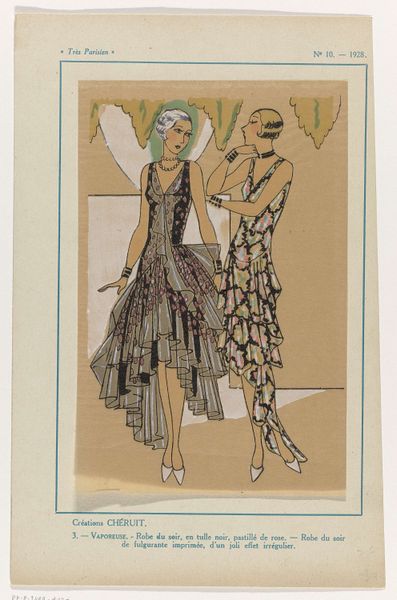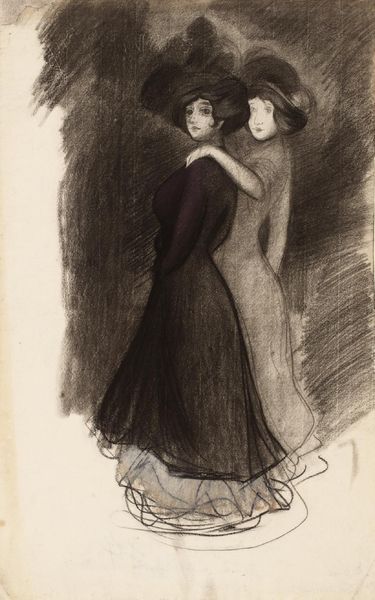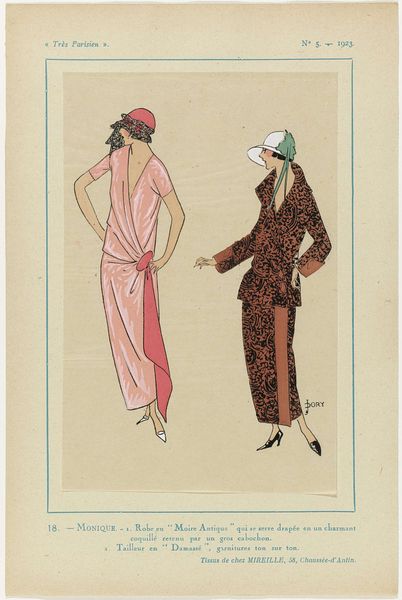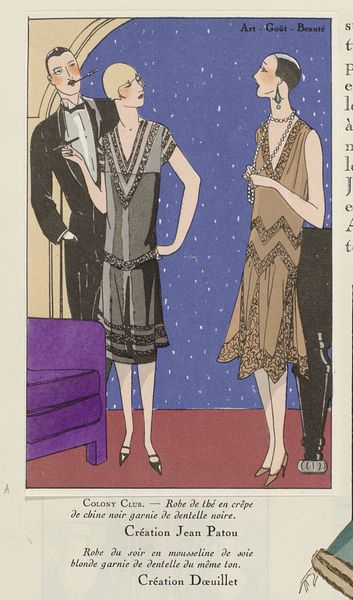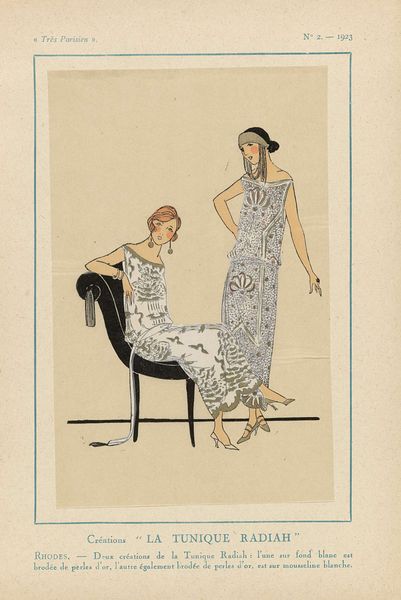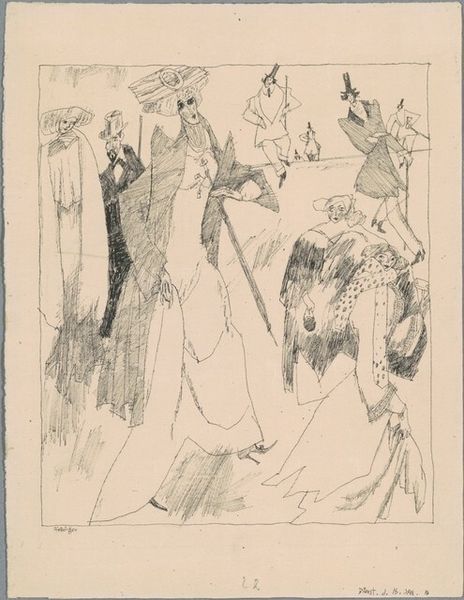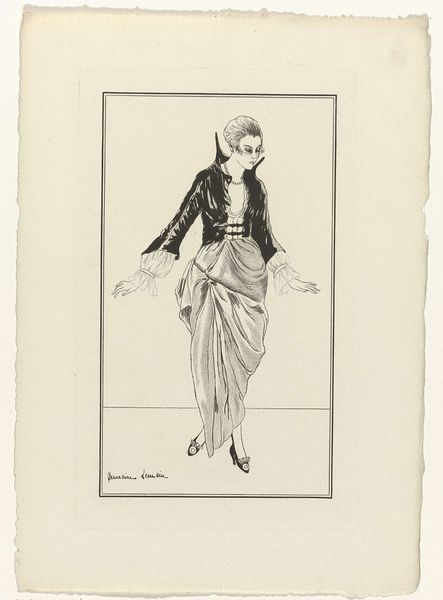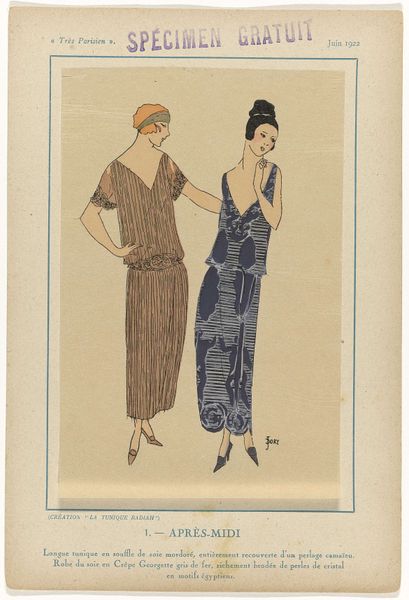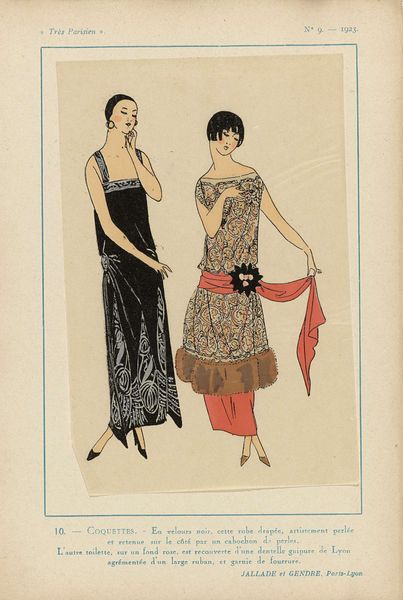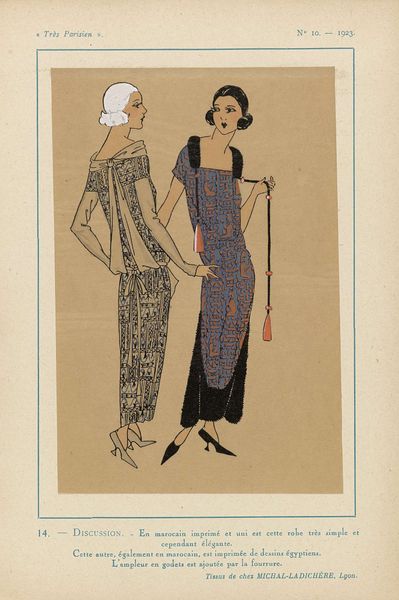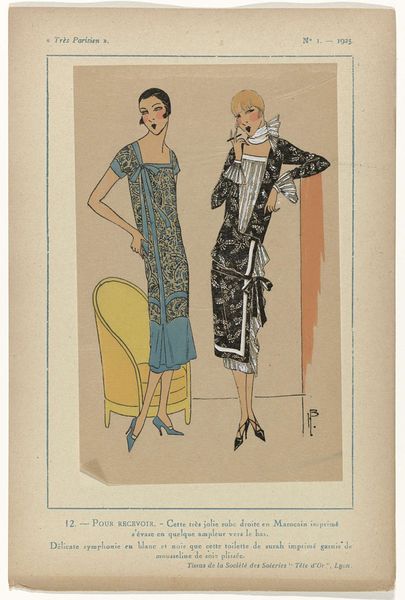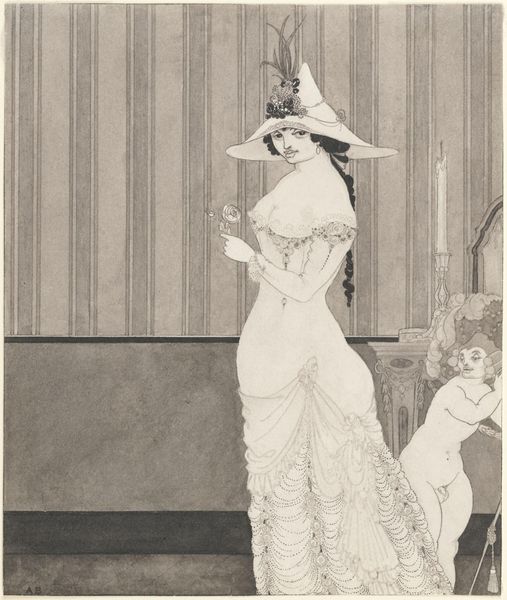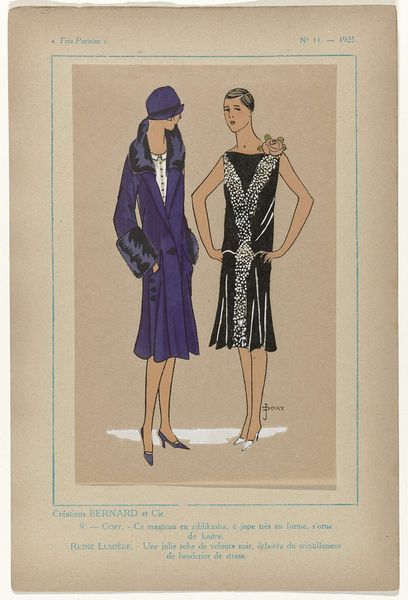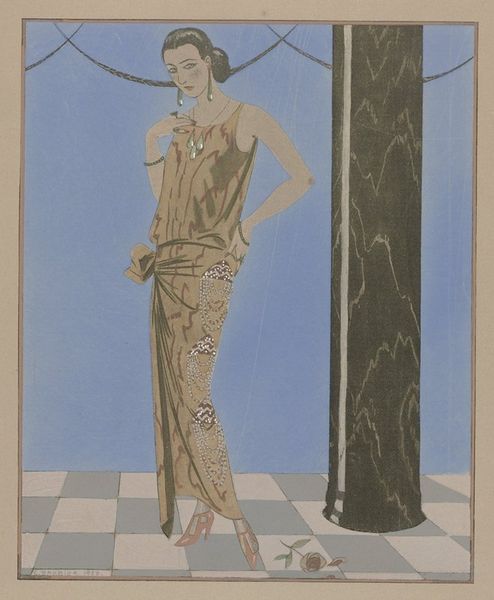
Gazette du Bon Ton, 1921 - No. 3, Pl. IX: Robe d'après-midi, de Beer; et robe du soir, de Worth. 1921
0:00
0:00
drawing, paper, ink
#
portrait
#
art-deco
#
drawing
#
paper
#
ink
Dimensions: height 246 mm, width 186 mm
Copyright: Rijks Museum: Open Domain
Editor: This is "Gazette du Bon Ton, 1921 - No. 3, Pl. IX: Robe d'après-midi, de Beer; et robe du soir, de Worth," a drawing made with ink on paper. It really captures that distinct, somewhat melancholic mood of the early Art Deco period. What strikes you when you look at it? Curator: I see the work as fundamentally about production and consumption. Consider the "Gazette du Bon Ton" itself. It's a commodity, a magazine whose very purpose is to fuel desires, dictating what is "good taste." Look at the stark lines of the drawings, presumably mass-produced for print. What does the industrialization of image-making tell us about how people began to perceive luxury? Editor: So, the drawing isn't just representing fashion, but it's also part of the fashion industry itself? Curator: Precisely. The labor of the artist is part of a chain. And those dresses? Meant to be purchased, worn, consumed. Think about the materials – silk, dyes – and the labor involved in acquiring and transforming them into objects of desire. Who benefited from the creation of these garments, and under what conditions were they made? The artist's lines are deceptively simple. Editor: It does make me think about the hidden costs, the labor and materials used to create what we see as elegant designs. Do you see any tension between "high art" and commerce in this piece? Curator: Absolutely. The "Gazette" sought to elevate fashion to an art form, while simultaneously functioning as an engine for capitalist consumption. Where do we draw the line between artistic expression and commercial enterprise? By understanding that interplay, we gain deeper insight into the art and its period. Editor: That makes me see the image in a totally new way! I’ll definitely look into the social history of the "Gazette du Bon Ton" itself. Curator: Indeed! Examining the work as part of a system – material production, distribution, and cultural influence – reveals fascinating truths about its purpose and lasting legacy.
Comments
No comments
Be the first to comment and join the conversation on the ultimate creative platform.
